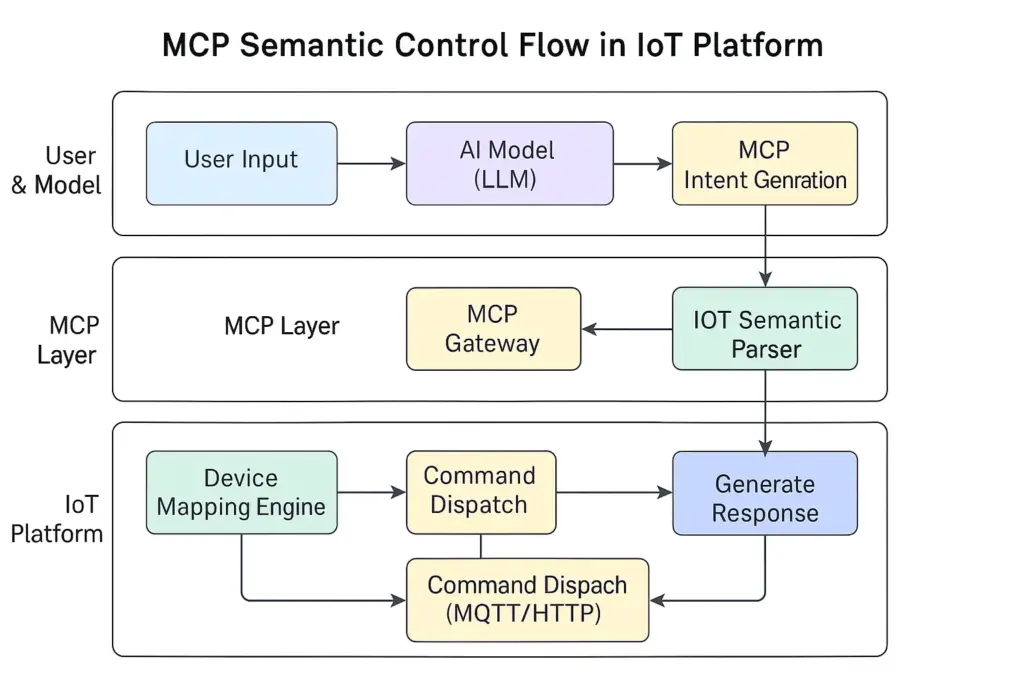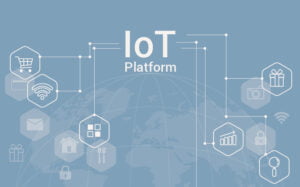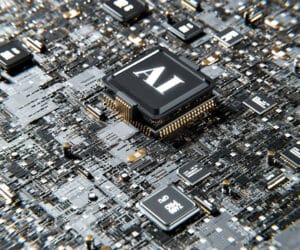Today’s AI models can write poetry, code, and solve math problems. But when will they be able to "act"—like switching on a light, adjusting an AC, or starting a production line? Model Context Protocol MCP IoT might be the answer.
1. Why Can’t Powerful AI Control the Physical World Yet?
Over the past two years, large models like ChatGPT, Claude, and DeepSeek have reached expert-level performance in writing, coding, and reasoning. But in the physical world—smart hardware, industrial control, automation—AI still struggles to take real actions. Why?
- AI doesn’t understand the structure of device systems
- LLM can understand "Turn on the meeting room AC" but doesn’t know the device ID or control command for "meeting room AC".
- AI lacks a standardized control protocol
- Most IoT systems only accept low-level protocols like MQTT, Modbus, or HTTP—not natural language or high-level intentions.
That’s where the Model Context Protocol (MCP) comes in. Designed for AI powered automation, MCP enables model inference outputs to drive real-world actions via MCP servers, unlocking AI scheduling and control capabilities across industries.
2. What Is Model Context Protocol (MCP) and Why Is It Key to Connecting AI and IoT?
MCP, short for Model Context Protocol, is a standard proposed by the EMQX community. It’s designed to help AI models control real-world systems.
MCP’s mission:
🔹 Enable large models to generate structured, semantic control intentions
🔹 **Let IoT platforms recognize those intentions and convert them into device actions
📌 Example: How AI Uses MCP to Control Devices
Let’s say you tell an AI assistant: “Set the second floor office AC to 26°C.” A model like GPT-4 would generate this MCP JSON command:**
{
"action": "set",
"target": "device/ac/office_floor2",
"value": {
"temperature": 26
}
}After receiving this command, the IoT platform:
- Parses the target:
device/ac/office_floor2 - Uses a mapping table to convert it into an MQTT command
- Sends it to the device and returns status feedback (success or failure)
This turns a natural language command into a complete, executable control process.
3. Why Traditional IoT Platforms Need MCP as an AI-to-Device Bridge?
✅ 1. IoT platforms have lots of data—but little semantic understanding
- Most platforms rely on rule engines, scripts, or webhooks.
- They can't process dynamic language like “Set the AC to comfort mode” unless pre-programmed.
✅ 2. LLMs understand semantics—but can’t act
- A model knows “comfort mode” means 26°C + low fan + dehumidify,
- But it can’t send control signals or convert to MQTT/Modbus/HTTP.
✅ 3. MCP bridges this gap
- Standard structure:
action,target,value,condition - IoT platforms can parse and map control intents easily
- LLMs can output intents in a predictable, structured format
✅ The result: You talk to the IoT platform in natural language, and it understands and acts.
4. How IoT Platforms Integrate MCP for Closed-Loop AI Control?
There are three main integration paths:
🔹 Option 1: Use APIs to Receive MCP Data from the Model
- Expose an API to accept model output (from GPT-4, DeepSeek, etc.)
- MCP JSON enters the control layer of the platform
- It gets mapped to device commands (MQTT, Zigbee, Modbus) and sent to endpoints
Advantages: Fast to implement, clear structure. Great for teams with existing AI capabilities.
🔹 Option 2: Deploy MCP Adapters on Edge Gateways
- Add MCP parsing logic inside edge gateways
- Handle parsing, device control, and feedback locally
- Ideal for industrial or building settings needing real-time and secure control
Advantages: Works offline, faster response, localized execution.
🔹 Option 3: Build a Dedicated “Model Gateway” Middleware
- A middle layer that handles AI-to-device intent translation
- Receives model output → parses MCP → sends to device management system
- Supports multi-tenant, device directories, access control, and logging
Advantages: Scalable and customizable—suitable for larger IoT platforms or SaaS vendors.
5. Industry Use Cases: MCP-Powered Automation in Smart Buildings, Factories, and More
The table below shows how MCP integrates with different industries to enhance smart control:
| Industry | Natural Language Input (AI Recognized) | MCP Intent Output | IoT Platform Action |
|---|---|---|---|
| Smart Building | “Dim the meeting room lights a bit” | { "action": "set", "target": "device/light/meetingroom", "value": { "brightness": 30 }} | Control Zigbee lighting |
| Industrial Automation | “Check line 3’s status” | { "action": "query", "target": "machine/line3/status" } | Read PLC/Modbus status |
| Retail Store | “Turn off all ad displays after closing” | { "action": "set", "target": "device/signage/*", "value": { "power": "off" }} | Shut down Android screens |
| Smart Agriculture | “What’s the temperature inside the greenhouse?” | { "action": "query", "target": "sensor/temp/greenhouse1" } | Return sensor data |
| Smart Community | “Open the garage door of Building 1” | { "action": "set", "target": "device/door/garage1", "value": { "open": true }} | Trigger gate control |
With MCP, interaction moves beyond command parsing to full scene-aware action control.
6. MCP vs Traditional IoT Rule Engines: A Comparison
Legacy IoT platforms often use rule engines or flow builders like IFTTT or Node-RED. These are reliable but lack semantic flexibility:
| Comparison | MCP (Model Control) | Rule Engine |
|---|---|---|
| Command Source | AI model-generated intents (natural language) | Predefined condition-action rules |
| Flexibility | High—supports abstract expressions | Low—requires exact triggers |
| Learning Curve | Medium—requires API or model access | Low—drag-and-drop configuration |
| Learning Capability | Yes—models can fine-tune and learn via context | None |
| Control Granularity | Fine—supports nested or compound actions | Usually single-layer actions |
| Use Cases | AI assistants, natural language control, smart suggestions | Automation, scheduling, alert response |
✅ Best Practice: Combine both approaches
→ Use MCP as the entry point for semantic control, and let rule engines handle low-level execution, forming a full intent-to-action pipeline.
7. MCP + IoT Platform Architecture Diagram
The following Mermaid chart shows the complete MCP flow—from user input to device execution and feedback loop:

✅ Key Highlights:
- MCP acts as the semantic control hub
- IoT platform must map
target-idand adaptvalueparameters - AI model receives feedback and learns in context
8. Security, Permissions & Multi-Tenant MCP Deployment
When deploying MCP in enterprise or industry platforms, security and compliance are critical. Consider the following design practices:
🔐 Role-Based Access Control (RBAC)
- Configure access rules for each
target(device ID) andaction(control type) - Different roles (admin, AI assistant, operator) have different permissions
- All actions are logged and auditable
🔒 Security Controls
- Sign and verify all MCP data (e.g., JWT token)
- Use HTTPS + TLS for secure transmission
- Prevent prompt injection and sanitize AI output on the model side
🧱 Multi-Tenant Adaptation
- Use
tenant_idto isolate intents per organization - Each tenant has its own
targetnamespace - Prevent unauthorized or cross-tenant access from models
9. How to Prompt LLMs to Output Standardized MCP Intents
Although models like ChatGPT, Claude, or DeepSeek have strong language understanding, generating executable structured control commands still requires prompt engineering and context guidance.
✅ Recommended Prompt Template
You are a smart home assistant. Convert the user's natural language request into a standard MCP JSON command.
Use fields: action, target, value.
User Input: Turn up the meeting room light to 70%
Output:
{
"action": "set",
"target": "device/light/meetingroom",
"value": { "brightness": 70 }
}📌 Prompt Tips
- Always output a clean JSON structure
- Predefine target namespaces (e.g., device/light/...)
- Avoid unnecessary explanation in output
- Maintain a dictionary of common devices, scenes, and actions for better recognition
10. Recommended Open Source Tools & Middleware for MCP
If you want to quickly implement MCP on your IoT platform, try these open-source projects:
| Tool / Project | Purpose | URL / Notes |
|---|---|---|
| mcp2mqtt | Maps MCP intents to MQTT control commands | GitHub |
| OpenMCP Server | Intent management and API server for MCP | Can be used with EMQX or your own dispatcher |
| Promptflow / Langchain | Build prompt flows and multi-turn conversations | Great for combining LLMs with IoT state feedback |
| EMQX Rule Engine | IoT message routing and rule processing | Can trigger device actions based on MCP intents |
🔧 We also offer full-stack services for MCP → IoT → Feedback Loop integration.
11. The Future of MCP + IoT: A New Control Language for AI?
Though MCP is still in early stages, its potential is clear:
🚀 Three Trends to Watch
- MCP may become the standard interface for AI control over the physical world
- Just like HTML standardized the web, MCP could unify AI intent output
- Platforms like EMQX already support native integration
- IoT platforms will shift from passive triggers to proactive AI-driven responses
- Moving from rule-based triggers to AI intent execution
- Drives IoT toward intelligent services
- AI inference + IoT real-time status = adaptive control systems
- Example: Model predicts “rain is coming” → checks window sensors → auto-close windows
- AI starts taking action based on understanding, not just commands
12. Summary & ZedIoT Solutions for MCP IoT Integration
The Model Context Protocol marks a turning point for IoT and AI convergence. By letting LLMs like GPT-4 translate natural language into executable device commands through MCP servers, organizations can achieve true AI powered automation. Whether it’s real-time AI scheduling in smart factories or natural language control in smart buildings, MCP enables structured, scalable intelligence
Key Benefits
- ✅ Quickly integrate with AI models like ChatGPT, Claude, DeepSeek
- ✅ No need to retrain models for device control
- ✅ Seamless integration with existing IoT platforms
- ✅ Enterprise-ready: supports permissions, multi-tenancy, private deployment
Want to Try MCP with Your IoT System?
We offer:
- AI model integration and prompt design
- IoT platform adaptation and connectors
- MCP middleware customization and deployment
- Private deployment and tailored industry solutions
📩 Contact us to schedule a demo or explore how we can accelerate your AI-to-IoT journey.
📚 FAQ
Q: Who created the MCP standard?
A: MCP (Model Context Protocol) was proposed by the OpenAI developer community and now has variants supported by multiple platforms.
Q: Is it related to voice control or NLP?
A: Yes. MCP is the bridge from “understanding” to “doing.” It can work with voice input to create a full talk-to-control loop.
Q: What if our IoT platform doesn’t use MQTT?
A: MCP defines only the intent structure—not the transport protocol. You can use HTTP, WebSocket, or others.Q: How does MCP help AI control IoT devices?
A: MCP enables AI models to output JSON-based structured intent which IoT platforms can map to protocols like MQTT, Modbus, or HTTP for real-time device control.Q: What are the benefits of using MCP with LLMs?
A: LLMs like GPT-4 can interpret natural language and generate MCP intents for automation tasks, enabling model inference, AI scheduling, and AI powered automation without retraining.Q: Can MCP work with existing IoT platforms?
A: Yes, MCP can be integrated into existing IoT platforms via MCP servers or edge gateways, enabling closed-loop AI control without disrupting current infrastructure.

